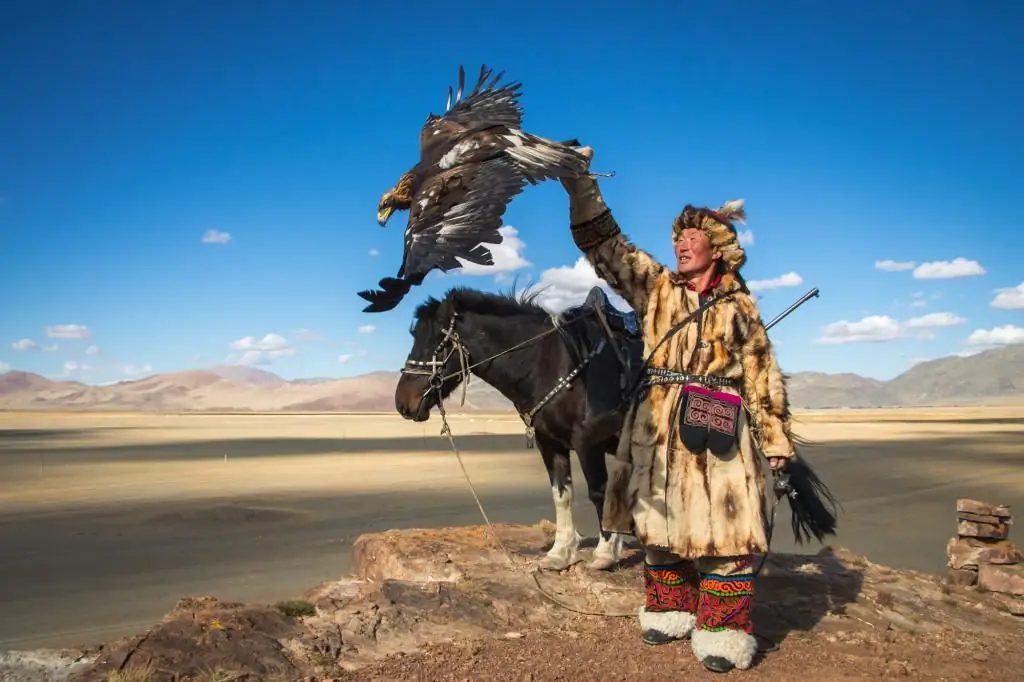- Author Harold Hamphrey [email protected].
- Public 2023-12-17 10:06.
- Last modified 2025-01-24 11:10.
Their monasteries rest against the clouds, and the monks keep centuries of secrets. Not every traveler is able to be in Tibet. A special decision from the Chinese government, long flights and altitude sickness are just some of the barriers to getting there. Pilgrimage around the clock at the residence of the Dalai Lama in the capital of Tibet, Lhasa - also crowds of travelers. Thousands of believers come here every day, but the most spiritual favorite has not been here for more than fifty years.
Speaking for the autonomy of Tibet from China, the fourteenth Dalai Lama found himself in exile in India. The government's official position is that he will return to his homeland as soon as he renounces the idea of Tibet's autonomy.
You should definitely look at the following sights of Tibet with an explanation in the photos.

Jokang Temple
One of the main shrines of Buddhist pilgrims. Erected in 647,geographically located in the city of Lhasa. The name of the attraction of Tibet, the photo and description of which is presented, means "Buddha's house". The building has four floors, its roof is covered with bronze tiles. The area of the temple complex is 25,000 square meters. The central hall contains a statue of Buddha Shakyamuni, as well as sculptures of Chinese princesses Wencheng and Bhrkuti and King Songtsen Gampo.

Mount Yaowang
Many travelers believe that, according to legend, it can only be seen in a dream, but it actually exists. From afar, it visually resembles a large tent with a white dome at the top. The height of this mountain is 3725 meters. On its eastern side there is a temple of small size, tourists can watch and also take part in prayers. In the southeast of the mountain there are old caves, on the walls of which ancient Tibetan writings are engraved. From the top there is a stunning view of the surrounding nature and the historical part of the city.

Geopark
Located in Yangbajing District. The total area together with the adjacent territory is 2500 square meters. The construction of the park continues today, as it began relatively recently - in 2008. At the moment, a geological museum and a large park area operate on the territory.

Potala Palace
Geographic location - Lhasa city. TheThe palace was previously the main residence of the Dalai Lama and the main attraction of Tibet. The total area of the building and the territory adjacent to it is 360,000 square meters. The palace is located in the Lhasa valley, on a mountain hill with a height of 3700 meters. The two main buildings of the complex are the White and Red Palaces. The first was erected as a living area for the Dalai Lama, and the second - for religious rituals and prayers. The palace is listed as a UNESCO World Heritage Site.
Tashilhunpo Monastery
Located in Shigatse City. Founded in 1447 and still in operation. The name translates as "all happiness and well-being is collected here." The monastery is the burial place of the first Dalai Lama. The largest statue of Maitreya Buddha is kept on the territory of the building. Its height is 26 meters. Almost 300 kg of gold and silver, 1000 pearls and 100 diamonds, as well as about 100 tons of bronze were spent on decorating the statue. Currently, the eleventh Panchen Lama lives on the territory of the monastery.
Norbulingka Palace
Built in 1754 as a summer residence for the Dalai Lamas. At the moment it is one of the most visited tourist attractions. Geographically located in the western part of Lhasa. The total area with the adjacent park area is 36 acres. Reconstruction was carried out in 1954-1956.
Rongbuk Monastery
The landmark of Tibet is located at an altitude of 5100 meters in the Shigatse district, at the foot of Mount Chomolungma. It also has other names - Dzarong or Dzarongpu. This monastery is the highest in the world. Rongbuk was founded in 1902 by one of the Nyingma lamas. The monastery was destroyed in 1974 during the Chinese Cultural Revolution and restoration began in 1983. According to CNN's "Great Hermit Sites" (compiled in 2011), Rongbuk ranks first.
Mapam Yumtso Lake
Located 950 km west of Lhasa. It is considered one of the highest freshwater lakes in the world, as it is located at an altitude of 4500 meters above sea level. The total area occupies 520 square kilometers, the greatest depth is 82 meters. The lake is a place of pilgrimage, it is believed that its water is able to heal from diseases and get rid of sins.
Sera Monastery
Located 10 kilometers from Lhasa. Refers to the monasteries of the Gelug school of Tibetan Buddhism. One of the most popular shrines for pilgrimage. It was founded by Sakya Yeshi in 1419. Previously, Sera was home to five thousand Tibetan monks. At the moment, it has been converted into a museum, but more than a hundred monks live on the territory.
Yerpa Monastery
Located in the Tibet Autonomous Region of China, not far from Lhasa. Founded in 1056. On the territory there is a temple and ancient natural caves for religious rituals and prayers. The monastery remains active in our time, it is home to about 300 Buddhist monks.






